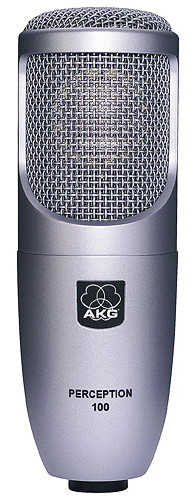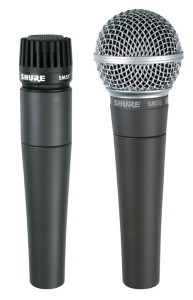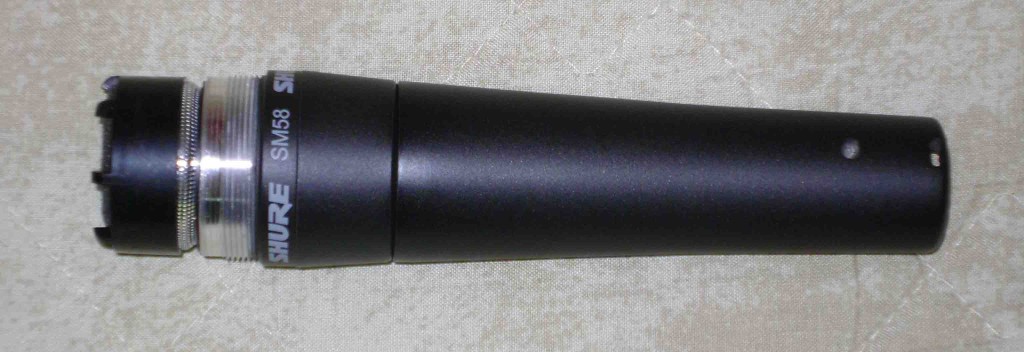
I realized that I glossed over microphones completely in my last post and since they’re such an important part of the process I thought I would give them a little more time. I mentioned one particular microphone, the USB one, but I didn’t even mention what type it was. So here’s a quick take on a couple different kinds of microphones and what they can be used for.

One of the most common types, especially when you’re playing out live, is the dynamic microphone. These microphones can generally handle very high sound pressure levels and usually have good rejection of sounds that don’t come right into the pattern which is usually cardioid or hyper cardioid. One of the most used microphones for live purposes and in the studio for horns and lots of other things is the Shure SM 57 followed closely by its brother the SM 58 (used mostly for vocals). PRO TIP: You can save money by buying an SM58 and using it with the bulb-shaped screen on for vocals and then take it off for recording horns. The element is the same so you get two types of uses for the price of one. Some other famous dynamic microphones are the Sennheiser MD 421, the AKG D112, and the Electro Voice RE20. I have used a Sennheiser MD 421 for years both live and for recording and I love it.
Condensors are quite possibly the most commonly used microphones in studios throughout the world. They are divided into several sizes based on the size of the capsule used. Large diaphragm condensors are useful for pretty much every type of instrument and they’re especially good at capturing the warmth of the instrument. Small diaphragm condensors are great at capturing higher overtones and are used extensively for things like acoustic guitars and drum overheads. My USB microphone is a large diaphragm condensor and I also use an AKG Perception 100. I have a small diaphragm condensor as well, the AKG C1000S.

Condensor mics usually require something called phantom power in order to work correctly. Some of them are as simple as putting in a 9-volt battery, some come with their own plug-in power source, and some require an external power input from your mixer or your audio interface. Even if you don’t have a need for it now, it might be a good idea to make sure your interface has phantom power…most of them do these days.
There are other kinds of microphones as well like ribbon microphones. You can spend as much or as little as you want but it’s a good idea to probably try to do research and save up for a microphone in the 150-250 dollar range to get started. You’ll thank yourself later for not buying something cheap. One microphone will get you started. Later you can try to fill in with a different type or maybe a matched stereo pair. You will also need some XLR microphone cables and some stands.
This was a very basic overview but it should be enough to get you started. Have fun.